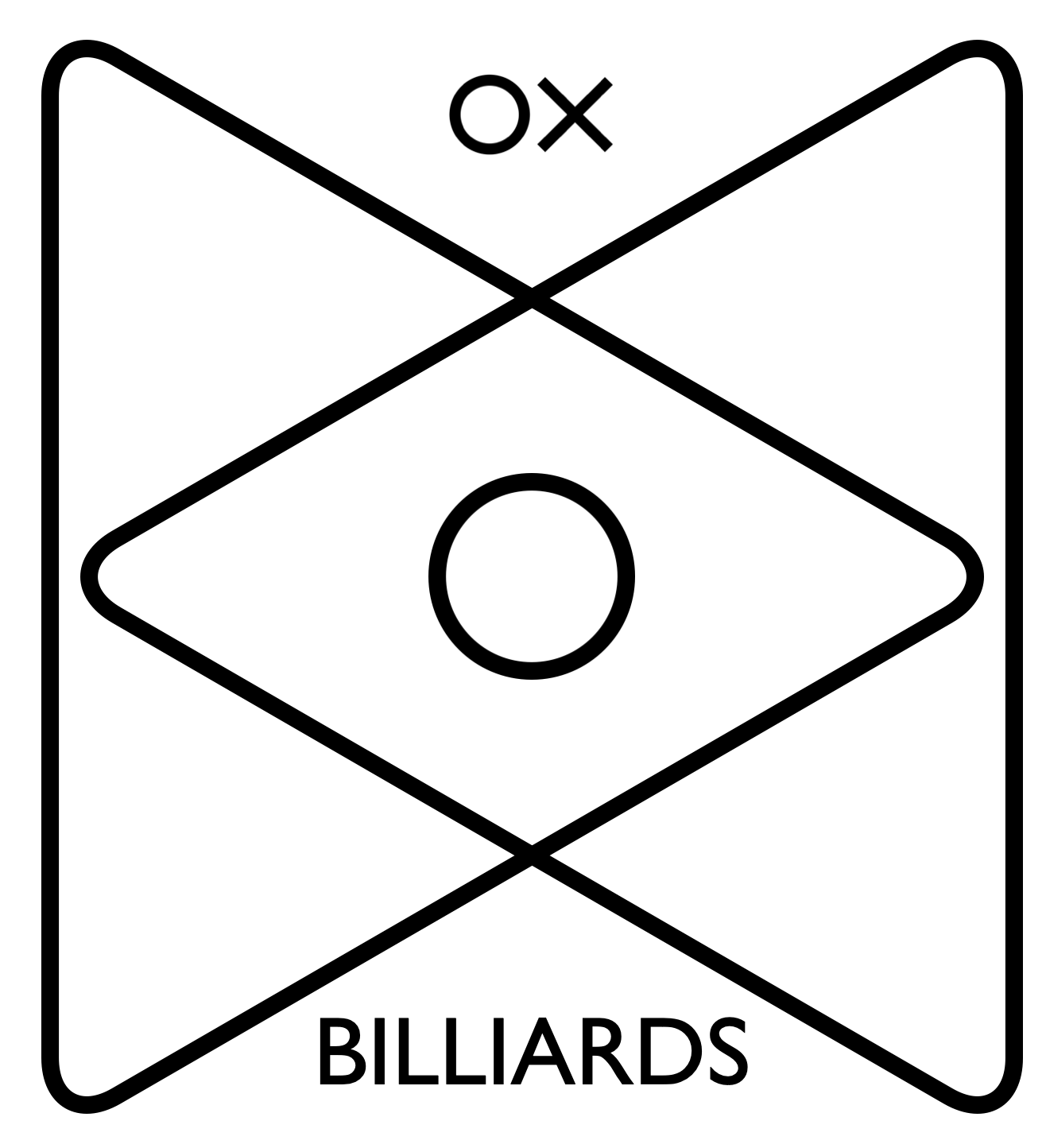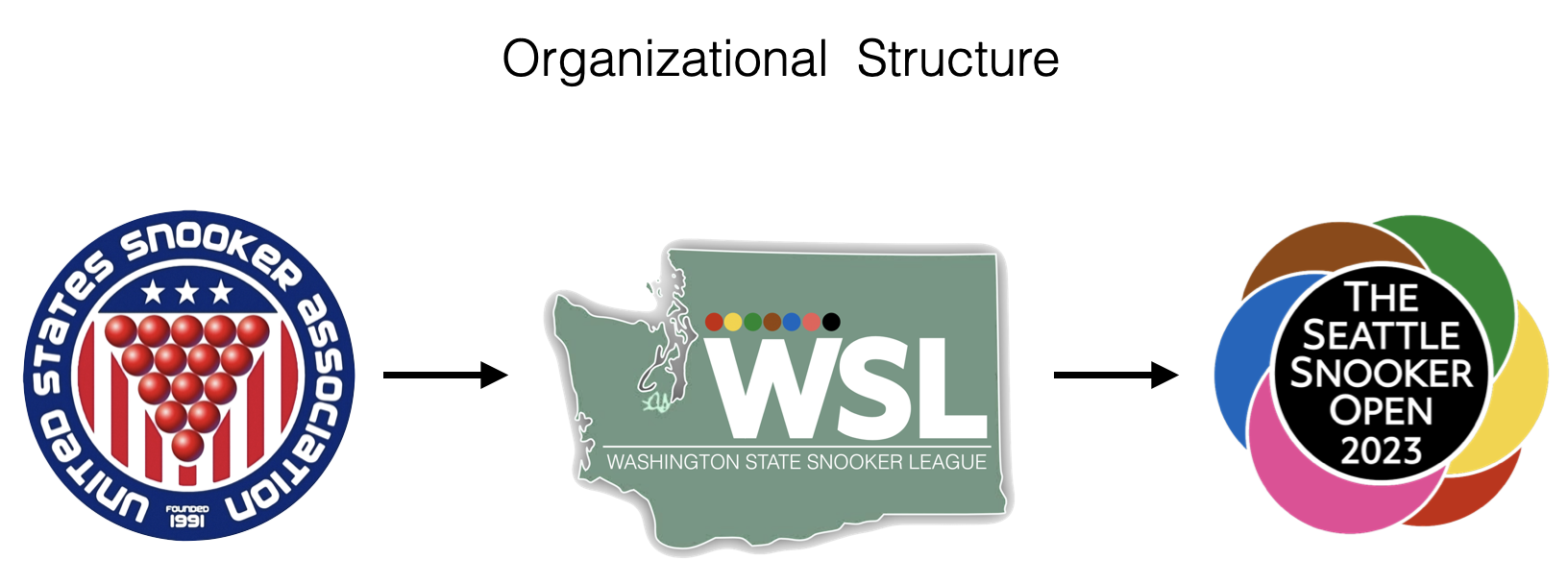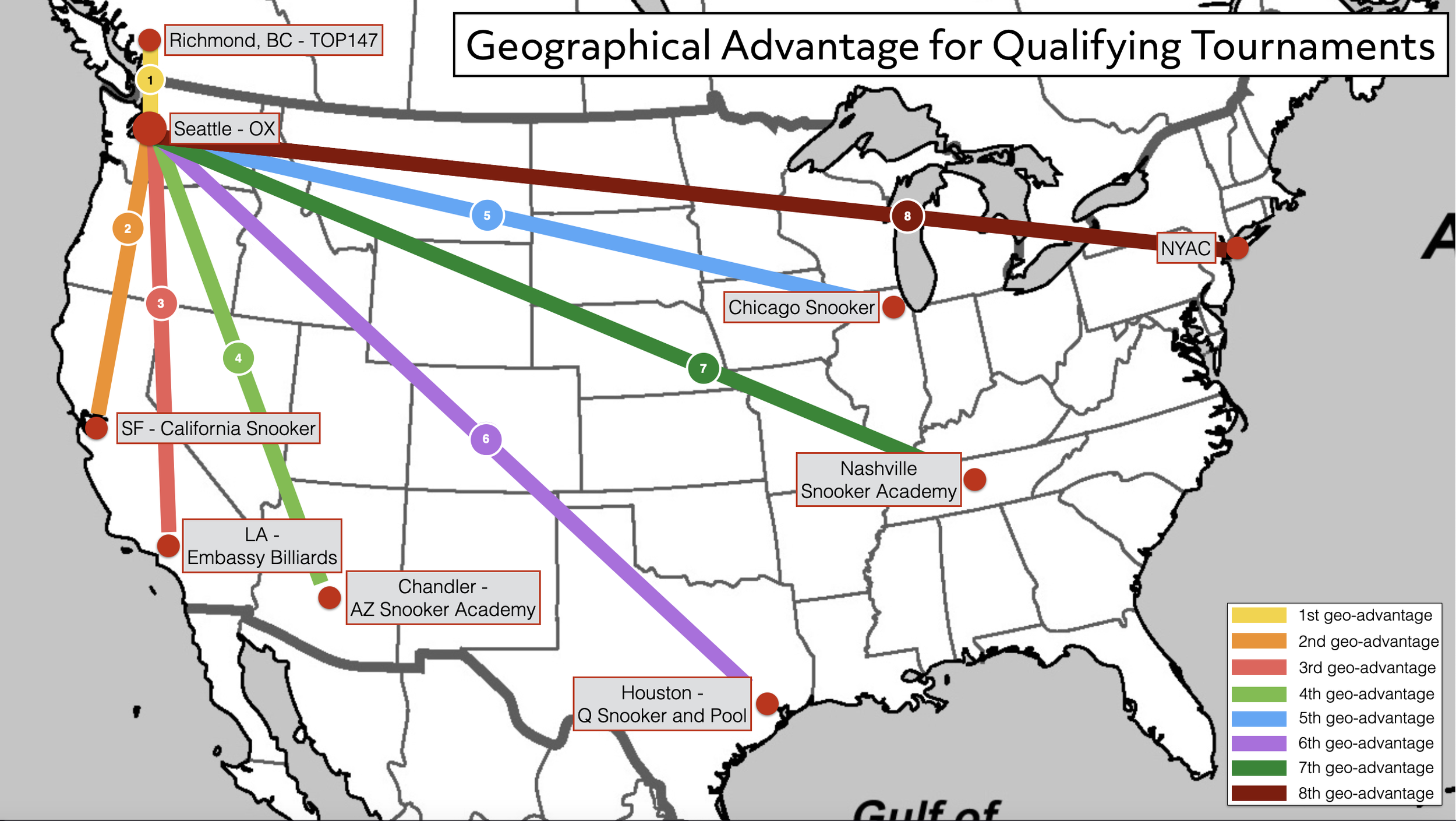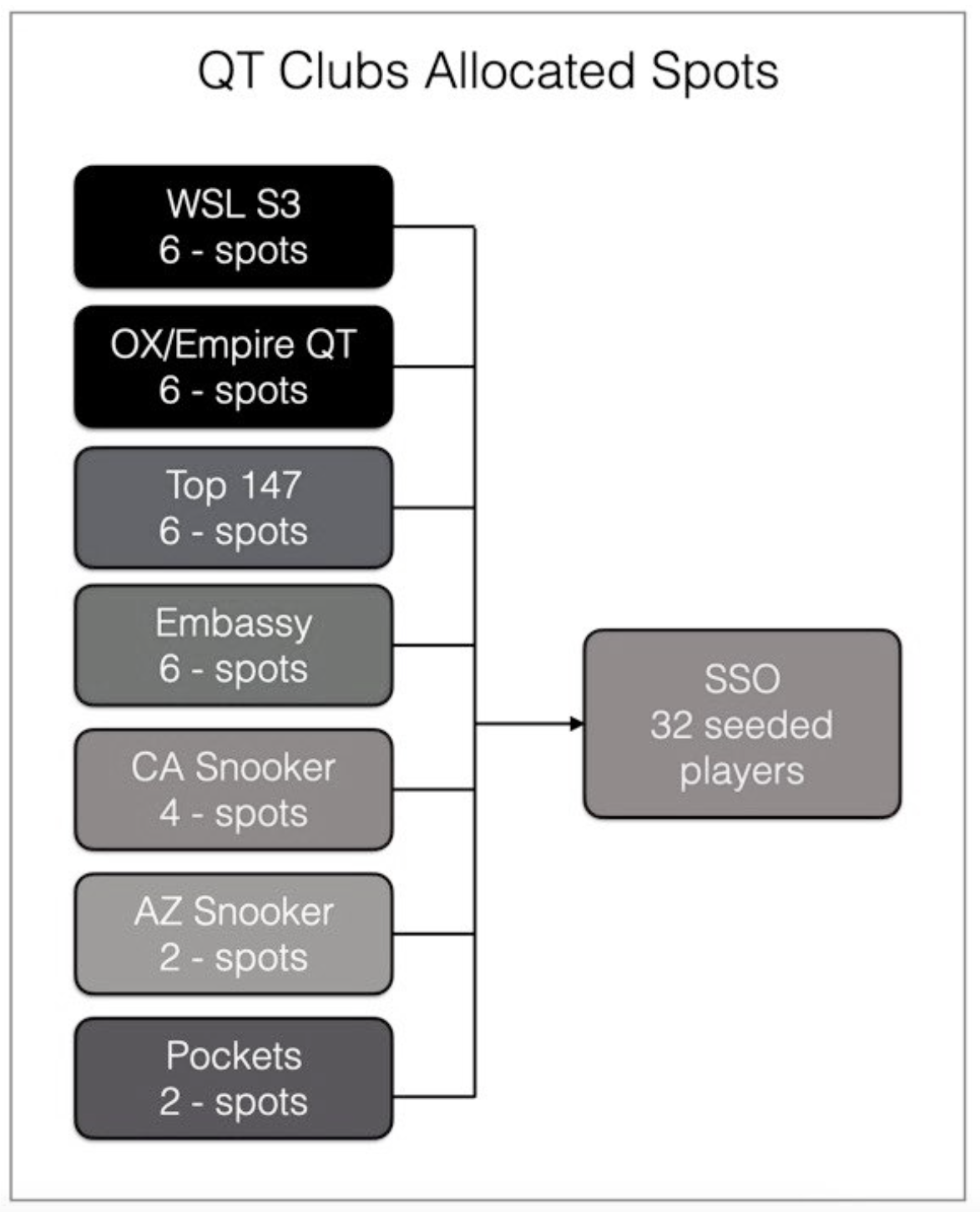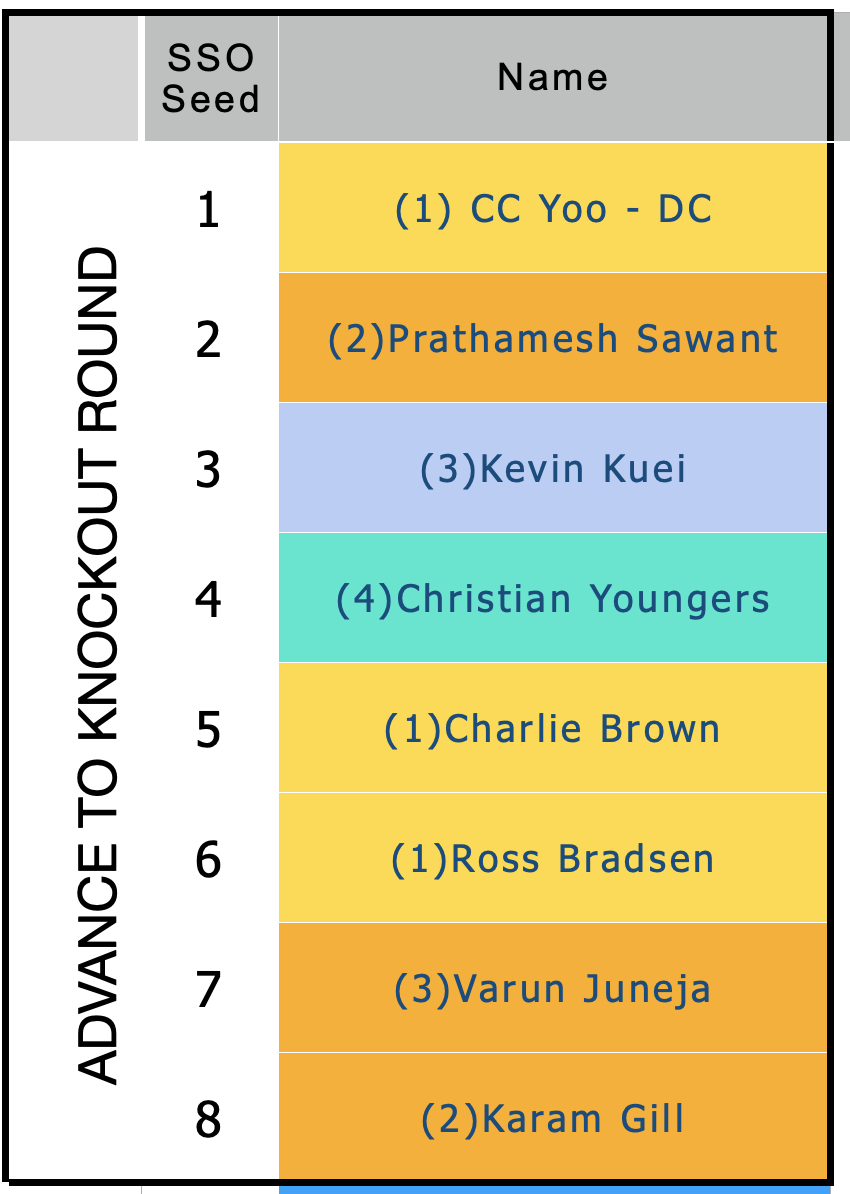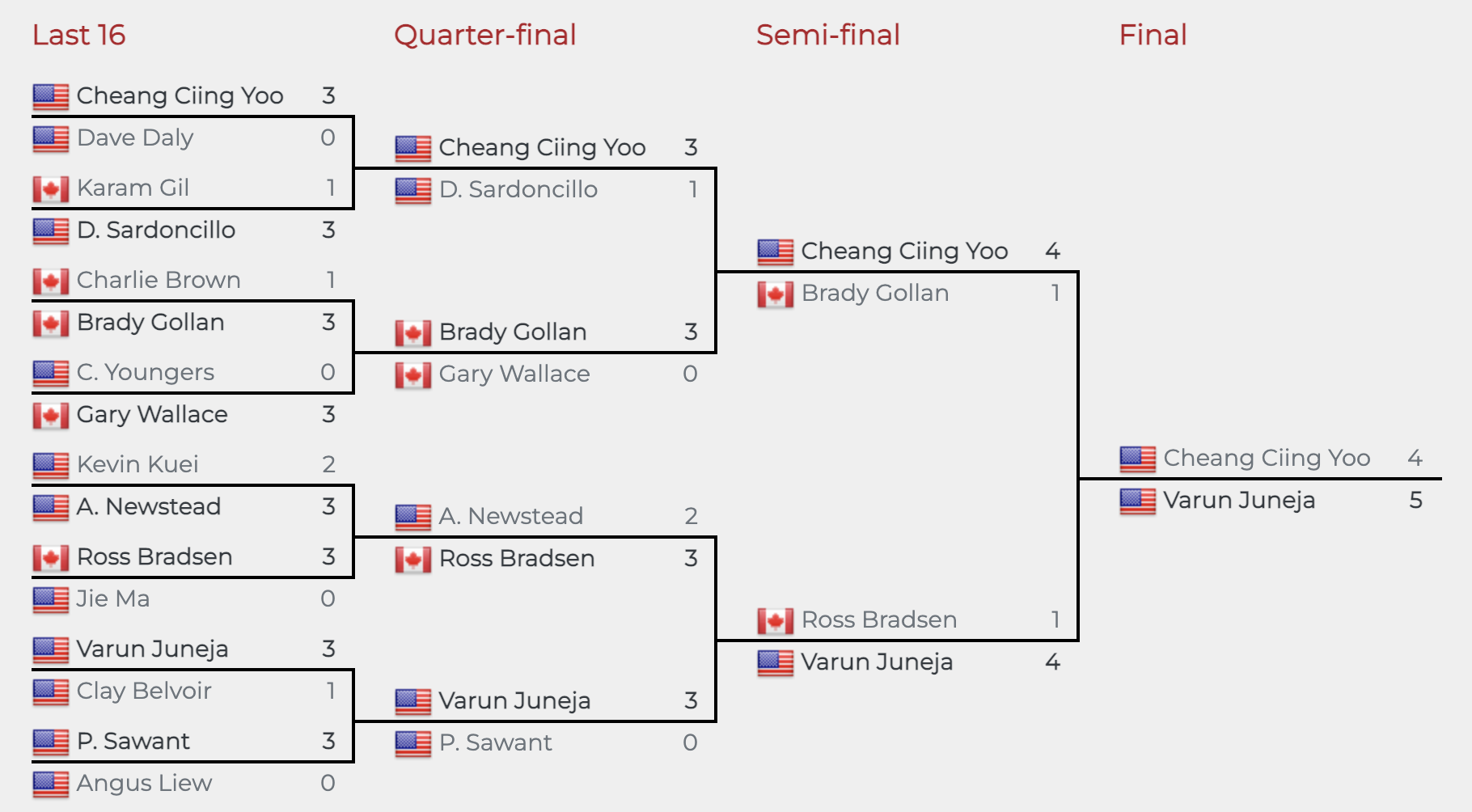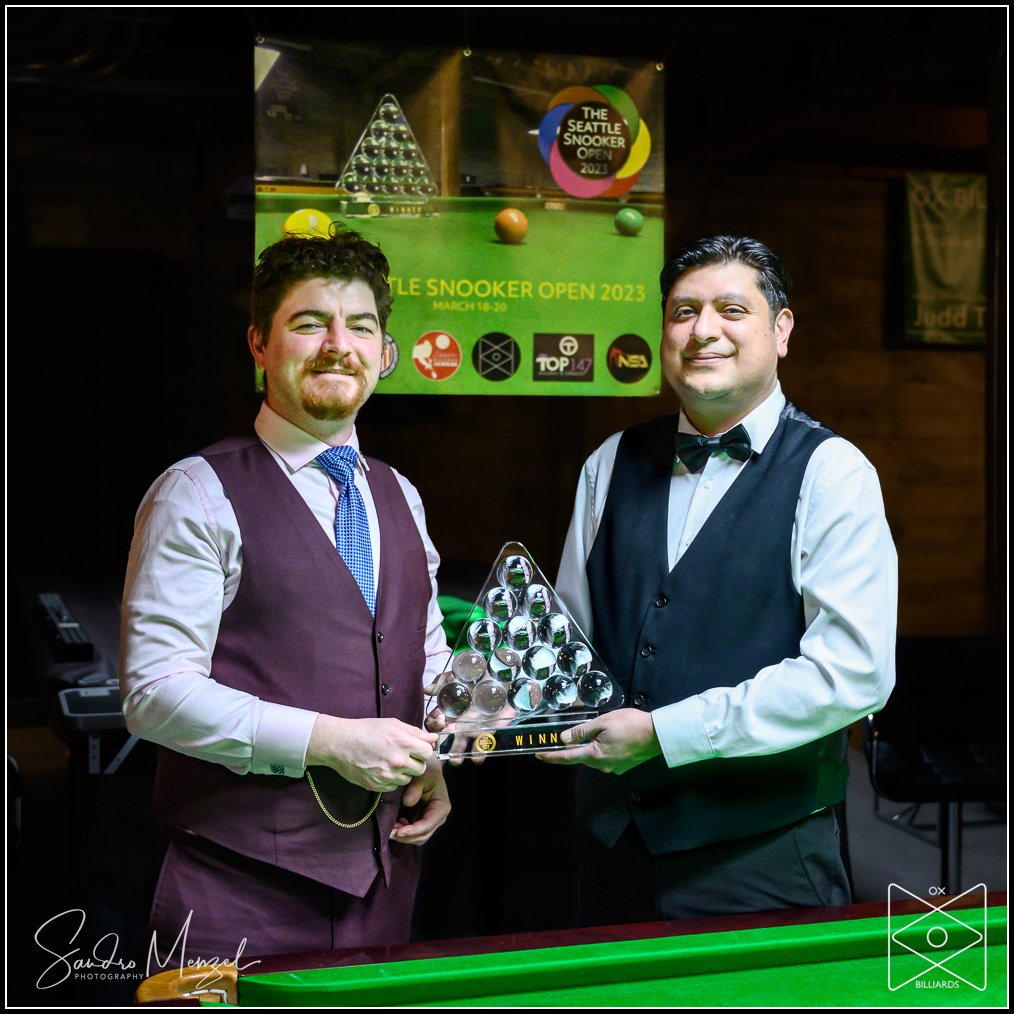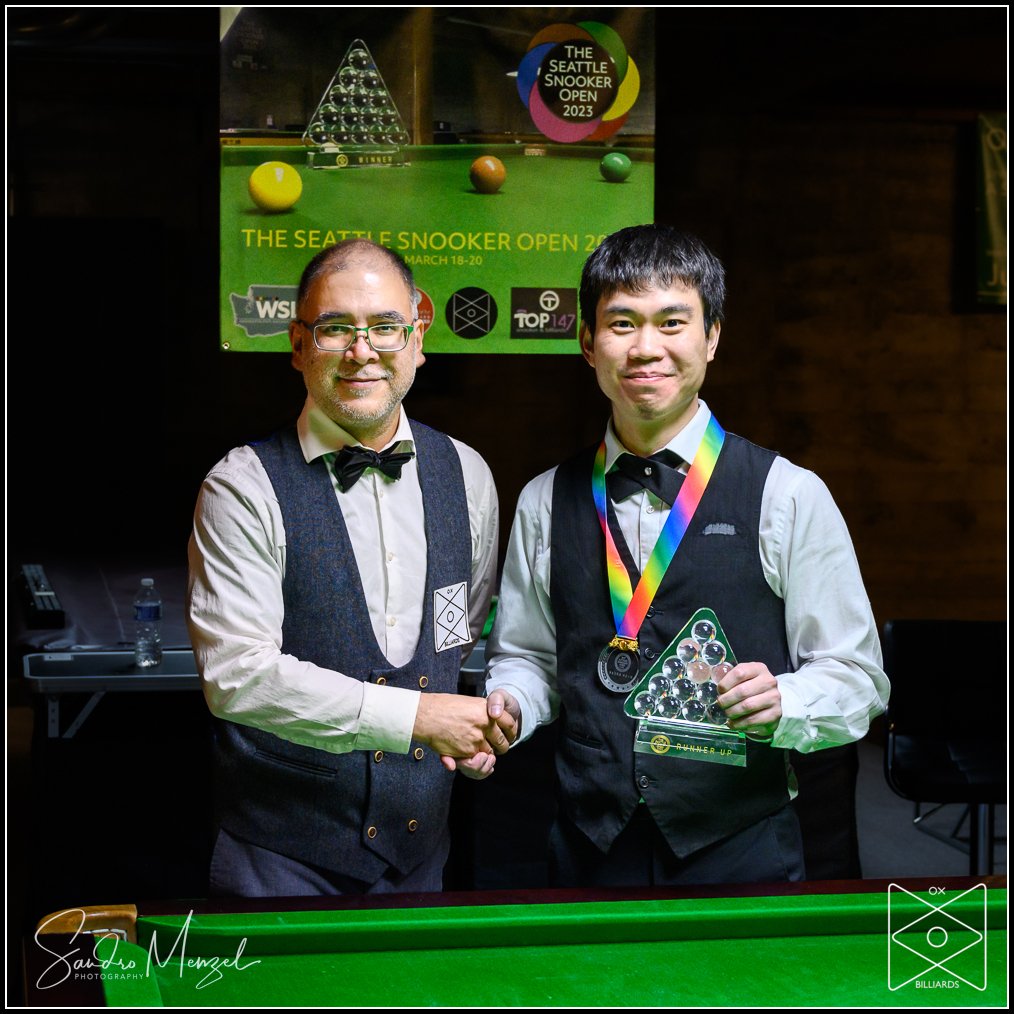The Seattle Snooker Open 2023 and Its Qualifying Tournaments
The United States Snooker Association (USSA) recognizes The Washington State Snooker League (WSL) as an official league. The WSL powers the Seattle Snooker Open (SSO). The SSO is also recognized by the USSA as an official tournament. The WSL and the SSO power the growth of Snooker in Washington State. This organizational structure ensures clear communication and workability so that we can grow the sport of snooker in Washington State and the US.
The Washington State Snooker League is a combined effort between OX Billiards and Empire Billiards, and we will soon welcome a new club, In The Pocket Snooker Club. The goal of WSL is to strengthen the sport of snooker in Washington State and to provide a non-handicapped league that is competitive, friendly, and ranks players’ skill and effort. The Seattle Snooker Open is open to all players, not just the players in the WSL. The Seattle Snooker Open welcomes players from other states and countries.
WSL Open Strategy Meeting
Before each WSL season we have held an open meeting where we strategize for the upcoming season, how to deal with growth of the league, and how we will format the Seattle Snooker Open. After the first Seattle Snooker Open in 2022 we realized that there was a big demand for this tournament that caught us off guard a little. We had to turn people away and that is counter-productive to growing snooker in America. Our intent was to address that for the upcoming SSO ‘23.
During the strategy meeting for the SSO ’23 a qualifying tournament system (QT) was proposed as a way to have more players involved. The thought was to have other clubs in different cities host a SSO QT. The host clubs would earn some greens fees for running the QT and help inspire players to compete for a spot in the SSO while giving lower-level player a chance to participate. As a result, the top players from each host club would represent their home club. The medium-term hope is to develop camaraderie at QT host clubs and competition between the host clubs and the SSO (or other main tournaments).
Benefits of Entering a QT or Qualifying Through League Play
There are obvious benefits to qualifying through the QT. First, the top (n) seeds from a QT would earn a PAID entry and a top seed for the SSO ’23. The top QT qualifiers also earned some cash to help with airfare and hotel. Second, the qualifying players will pay less in entry fees than players who enter the SSO without qualifying. Either by paying full price for the SSO entry ($250) or entering a QT, not qualifying and then entering the SSO as an unseeded player. Thirdly, those who qualify, may be seeded directly into the knockout round depending on how well they did. Finally, there would be an advantage for the top performers of the WSL. The top (n) players from the league automatically advance to the knockout rounds.
During the development of the QT system, we realized that it had other advantages for developing snooker in the US. The realization came when a problem arose— how to rank players from other clubs? The solution to that was to give a geographical advantage to the QT host clubs. Meaning, a third seed player from a QT club that is geographically closer to the SSO would rank higher than a third seed player from a club that is further away. The ramifications of this proposal sparked other ideas.
As mentioned, the QT system was designed to be repeated in other cities/clubs. So, if a club in Florida is hosting a Florida Snooker Open, then the geographical advantage is much different than for the SSO. When more clubs across the country use this system for their main tournaments and their own geographical advantages, then a proto-tour might develop due to the collaboration of clubs working together on dates. Over time, we will gather data on clubs that host the main tournament, clubs that host the satellite QTs, and the players who participated in each. Our assumption is that this data will reveal the hotbeds and deserts of activity for snooker in America rather than a simple list of clubs in the country. With that info we can pinpoint where to put our efforts to grow snooker and where to strengthen it.
The QT Manual and Contacting Partner Clubs
Once the QT Manual was completed we initially approached five clubs to host a QT (aside from OX), Top147, Richmond, BC; Embassy Billiards, San Gabriel, CA; California Snooker, San Jose, CA; Arizona Snooker Academy, Chandler, AZ; and Pockets, LA, CA. The goal here was to contact a small number West Coast clubs to test this system. We reached out to these five clubs knowing that not all may be able to host a QT.
Because we only contacted a small number of clubs, we allotted a large number of qualifying spots. When there are more clubs participating in a QT, then it would make sense to reduce the allotted number of spots per club. Ideally, there would be enough QT host clubs to fill all seeds for a 32 person tournament using only the top one or two QT seeds from each club.
But… Life Happens.
All clubs were receptive to the idea. However, there was a major setback. Injury and illness kept Mike off of his feet nearly three months. This severely delayed distributing the manual and helping clubs prep for their QTs. Even so, there was still a lot of interest.
Once healthy, the QT manual and packet was completed and sent to all the clubs. All clubs except Top147 had unavoidable conflicts in their schedule. Since a lot of time was lost, their schedules had filled up. But in a show of solidarity, Zia from Nashville Snooker Academy reached out and wanted to run a QT. Zia also put us in contact with Chicago Snooker and Q Snooker and Pool, in Houston, TX. Unfortunately, there was little time to turnaround a QT at that point. Zia’s help was much appreciated and exemplifies the spirit of growing snooker in the US.
David Burney from BC, Canada is very knowledgeable about running snooker tournaments. He works a lot with Top147 and was a key partner in running the QT as well as helping with the QT manual. With David’s help the three qualifying entities were Top147, WSL, and OX Billiards.
QT and WSL Results
Top147 qualified three players. WSL qualified six players, and OX qualified six in their QT. All totaling 15 qualified players. The top four seeds of the WSL and the first and second place finishers of the Qualifiers earned a paid entry and extra cash. They also automatically pass the group stage and advance to the Knockout Round on day two. The defending champion, Cheang Ciing Yoo earns the top seed. He also won the WSL Season 3. Prathamesh Sawant earns the second seed by finishing second in the WSL Season 3. Kevin Kuei earned the third seed by finishing third in the WSL Season 3. and the final WSL seed goes to Christian Youngers for finishing 4th.
Charlie Brown and Ross Bradsen finished first in their Qualifiers at Top147 and take the 5th and 6th seeds respectively. Varun Juneja finished THIRD in the Qualifier at OX but took the second seed since Kevin already had a spot, all other players moved up one. And Karam Gill won second place in his Qualifiers and earned seeds 7 and 8 respectively.
SSO Round Robin
There were 16 players in the round robin— four groups of four. Angus Liew, being the #9 seed overall was the only seed in his group, and the rest of the groups only had two seeds each. The remaining nine players were unseeded and randomized in the groups except to avoid two Canadians in one group if possible.
The top two players advanced to the knockout round. The first place group winners were randomized and paired against the bottom four seeds in the knockout round. The second place finishers were randomized against the top seeds in the knockout round.
Knockout Rounds
Varun Juneja - WINNER of the SSO ‘23. Photo: Sandro Menzel
CC Yoo - Runner Up and last year’s champion. Photo: Sandro Menzel
Discussion
We understood going in that this was a humble beginning,. We did not think that we had the complete picture, but knew that implementing this system at any level would yield important information on how to improve it. Things might look great on paper, or sound great in meetings, but the true test is during implementation. Aside from health issues, the implementation was sound. But if one person is a point of failure, then there needs to be more support.
For any main tournament, we learned that more QT host clubs will be better. We could award only the top two seeds of a QT a paid entry into the main tournament. If only the top two seeds earn an entry, then they can also earn more cash to help with airfare and hotel. This will also provide more representation across the country. In order for this to happen, there needs to be at least 16 QT clubs and or leagues for a 32 person tournament.
It will be interesting to incorporate clubs in other countries. The SSO is an open tournament and it makes sense to have QT host clubs in other parts of the world. The costs associated with traveling to the US means that the prize money for the SSO would need to increase. Also, this system could be used for a larger tournament like The US Snooker Open. As with everything, small and measured steps are needed, so perhaps the first step in growth would be to have PABSA help with QT host clubs in North and South America.
Other clubs wanting to use this system have our full support and are encouraged to do so. The more clubs hosting main tournaments will infuse American snooker with energy and purpose. OX will be happy to be a QT host site for any main tournament in the country.
Conclusion
There remains a lot of work, but the first iteration of the QT system has improved the SSO and was a success. Last year, the SSO had 24 players enter with a $75 entry fee. First place won $950. This Year, The SSO and its QTs saw 32 players participate with 24 entering in the SSO ‘23. The entry fee for the QTs were $175 and the entry for the SSO was $250. This year, the WSL added $2,000 to the player’s pot making the first place prize $3,000.
We reached our goals of including more people in the SSO tourney by adding qualifiers. The QT distilled the field of players to a higher standard than last year. This allowed us to have longer races in every round. Also, the higher entry fee for this year’s SSO also helped to increase the standard of play. Keep in mind that novice and intermediate players could still participate in QTs. As they progress, their goal will be to qualify for the SSO. And when they progress further, it will be to win it.
Recognition to Those Who Helped Make this Happen.
Aside from the clubs, organizations, leagues, and people mentioned above, this project could not have been accomplished without the help of several people. Thank you to: CC Yoo, Dave Daly, Prathamesh Sawant, Chris Lam, Frances Tso, Kevin Kuei, Angus Liew, Ajeya Prabhakar, Christian Youngers, OX Members, and Jaime Miller and many, many, more.
If you would like to join us in our snooker journey and want to attend the open meeting in April, email mike@oxbilliards.com to get on the list.
